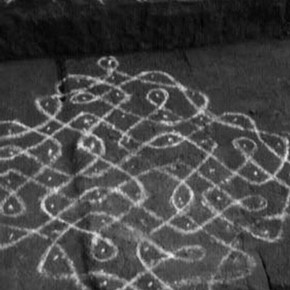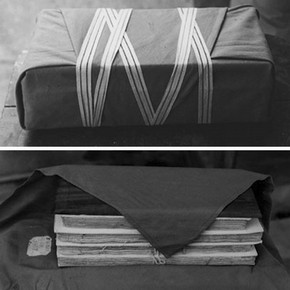Conservation Journal
April 1997 Issue 23
Traditional practices for the control of insects in India
P Perumal is a Books and Manuscripts conservator at the Saraswati Mahal Library in Thanjavur, South India. He was a recipient of a Nehru Trust Fellowship, which assisted him in undertaking a three month internship in the Paper and Book Sections of the Victoria and Albert Museum from April to June 1996. The following article is based on a seminar he gave to the Department.
The Saraswati Mahal Library is housed within the Royal Palace, Thanjavur, and was developed by the Maratha Kings of Thanjavur between 1535 and 1673AD. It contains an extremely important collection of manuscripts and books written in Sanskrit, Tamil, Telegu and English on all aspects of art, culture and literature.
The Preservation Section of the Library carries out the conservation of a wide variety of materials, which include palm leaves, scroll paintings, western manuscripts and books. The staff consists of one conservator (P Perumal), one manuscript repairer and an assistant who is responsible for the oiling of the palm leaf manuscripts to ensure their continuing flexibility. This is carried out by application of citronella oil with a soft cloth. The oil is rubbed into the surface of the leaf and this helps to increase flexibility and to deter attack by insects. Citronella is a common ingredient in insect repellents, sold over the counter at the chemist; turmeric is also used as an insect repellent. The repellent is mixed into a stiff paste, which is rubbed into every tenth leaf of a palm manuscript after it has been written. The strings, on which the leaves of the manuscript are threaded, are also dyed with an aqueous infusion of turmeric to make them less palatable to insects.The Library's collection of palm leaf manuscripts is in good condition due to good housekeeping practices, including the prevalence of a number of traditional practices. Palm leaf manuscript storage is of particular interest, as natural insect repellents have been in use for many years and have proved effective against cockroaches, silverfish and book lice. Dried leaves from a neem tree are sometimes placed between the front and back covers of the book to deter book lice (which feed on the fungi attracted to the hygroscopic paste). The neem leaves are picked in springtime, when the tree is in full flower and the leaves are a red colour. The natural insecticide contained in the leaves is at its most potent at this point.

Figure 2. Geometric designs drawn outside houses to deter insects. Photography by P Perumal (click image for larger version)
The manuscripts themselves are afforded further protection by wrapping each one in a woven, red coloured cotton cloth. This tradition has a practical basis, as it has been found that insects are repelled by red dyes and pigments (Figure 1). Furthermore, for this reason, red leather and book cloth is common in indian libraries and has been specified by the Government of India for the binding of all official papers.
Traditional practices in rural homes in India are also interesting to the conservator. Each day the area outside a family home is swept clean and a mixture of mud and cow dung is spread in the areas surrounding the buildings. A geometric design is then drawn in the earth with powdered rice flour (Figure 2). In South India, this is usually left uncoloured, whereas in parts of northern India the powder is pigmented. These designs are known as Rongoli in northern India and are called Kolam in the South. Apart from having great aesthetic merit, these designs have the added advantage of attracting crawling insects towards them and away from the entrance to the home. The effectiveness of this technique is enhanced if rice flour is mixed with red ochre and then sprinkled around the doorways and along steps leading to the house. Both the red colour of the powder, and the chemical composition of the pigment are sufficiently unpalatable to crawling insects that it will prevent them crossing the threshold.
April 1997 Issue 23
- Editorial - The Raphael Cartoons at the Victoria and Albert Museum
- The Prodigal Son: Examination and conservation of a Flemish cabinet on stand
- Traditional practices for the control of insects in India
- Conservation of the 'May Primrose' wedding dress
- Exhibitions: How do they do it?
- The Arundel Society - techniques in the art of copying
- A visit to Liverpool
- RCA/V&A Conservation Course Abstracts
- Printer Friendly Version
